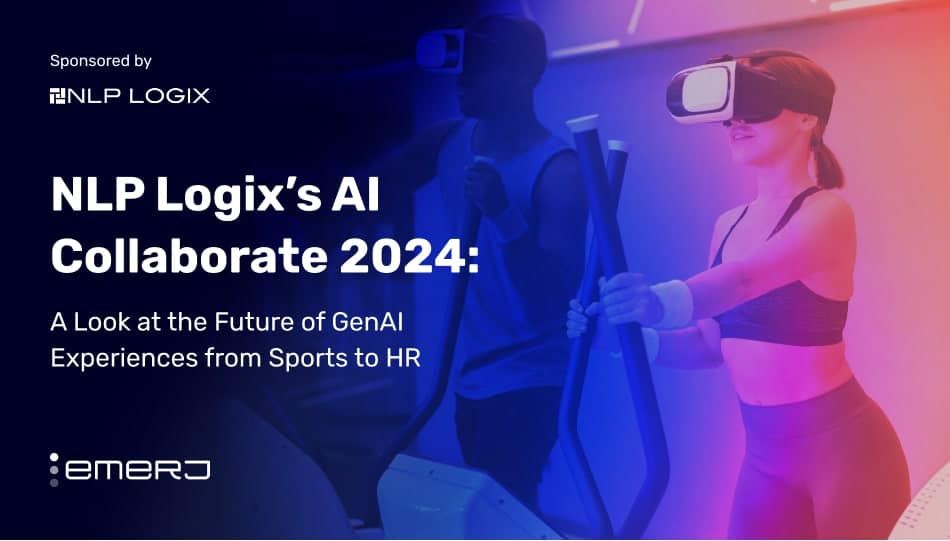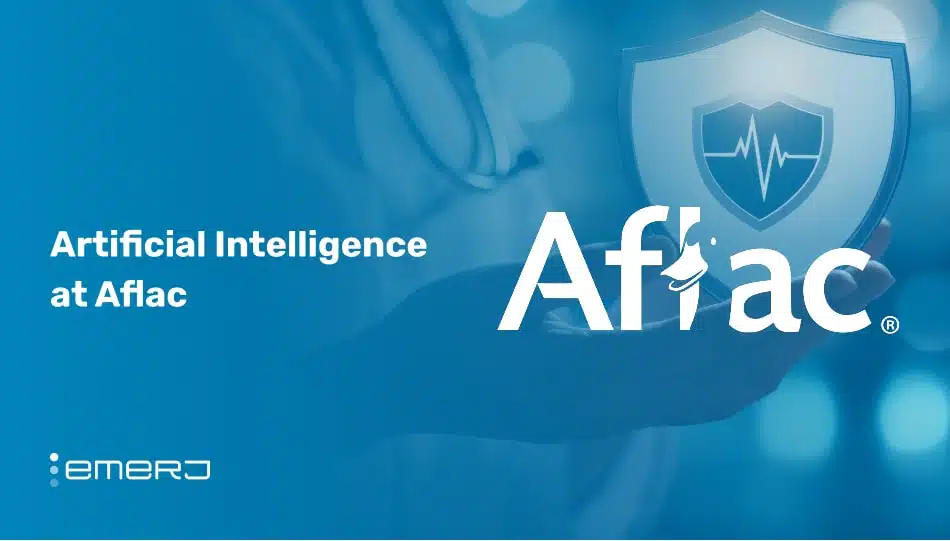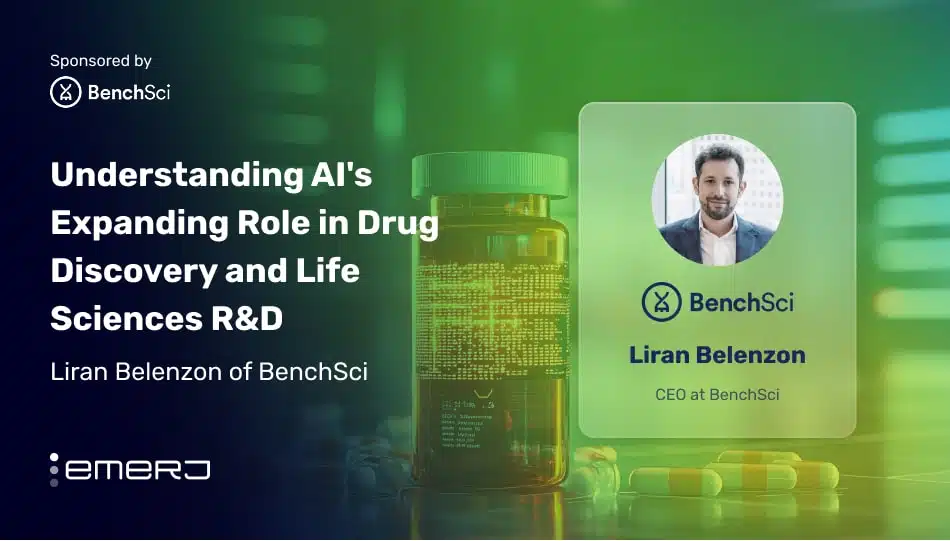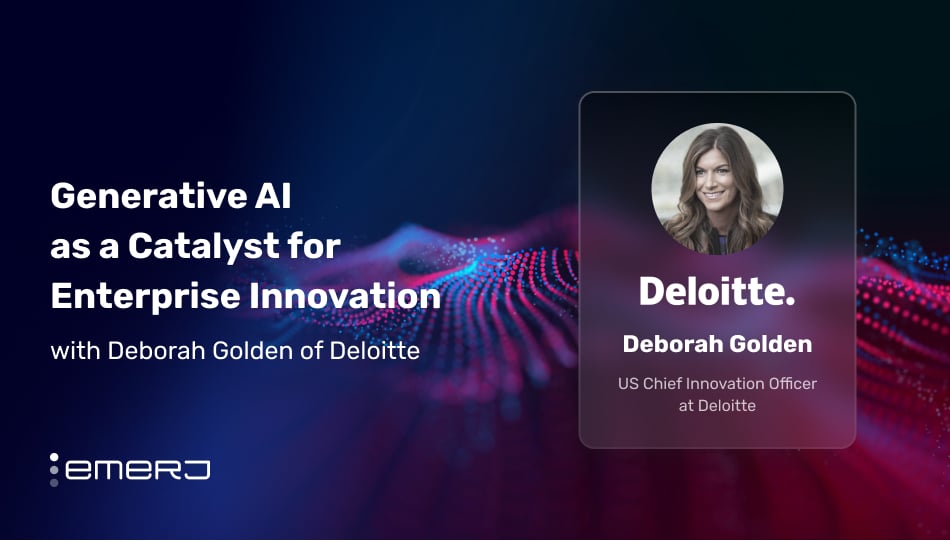This interview analysis is sponsored by Pieces and was written, edited, and published in alignment with our Emerj sponsored content guidelines. Learn more about our thought leadership and content creation services on our Emerj Media Services page.
Enterprises of every shape and size are benefiting from deploying generative AI tools to drive efficiencies in their organizations through simple automation.
A study conducted by MIT Sloan School of Management and Microsoft Research found that coding copilots powered by GenAI significantly boosted developer productivity: task completion time was reduced by 55.8% for users. Productivity gains mean that the integration of advanced AI tools has profoundly transformed the software development process, catalyzing a significant shift in developers’ roles and responsibilities.
The shift underscores the growing importance of effective management and documentation in the development process.
Emerj Senior Editor Matthew DeMello recently sat down with Akash Gupta, Co-founder and CEO at GreyOrange, and Tsavo Knott, Co-founder and CEO of Pieces, to discuss how advancements in AI tools are shifting the focus of software development from coding to creating and managing detailed designs and research.
Hearing from both sides of the table helps enterprise leaders better understand what management strategies – for human expertise as well as leveraging the right technology – are making the most significant differences in expediting developer workflows.
The following analysis examines three critical insights from their conversation:
- Optimizing onboarding and retention by streamlining processes: Enhancing onboarding efficiency and engineering retention by simplifying the learning process and tracking crucial insights to manage complex work effectively.
- Building teams by emphasizing diversity and growth: Enhancing team innovation and resilience by integrating diverse perspectives into hiring practices and fostering a culture of continuous improvement and adaptability.
- Balancing AI efficiency and detailed design: Increasing reliance on AI tools for implementation is shifting developers’ focus to creating thorough high-level and low-level designs, necessitating better management of detailed research and documentation.
Guest: Akash Gupta, Co-founder & CEO of GreyOrange
Expertise: Software Development, Entrepreneurship, Robotics
Brief Recognition: Akash graduated in 2012 from Birla Institute of Technology and Science (BITS) in India with a Bachelor’s Degree in Engineering. Prior to his appointment as CEO, Gupta held executive roles at GreyOrange, including Chief Technology Officer and Chief Product Officer.
Guest: Tsavo Knott, Technical Co-founder & CEO of Pieces
Expertise: Coding, Software Development, Entrepreneurship, Interactive Media, Computer Science
Brief Recognition: Tsavo graduated from Miami University in 2018 with a Bachelor’s Degree in Game and Interactive Media Design as well as Computer Science. Before co-founding Pieces in 2020, he was a Vice President and Co-founder of Accent.ai, a language learning platform.
Optimizing Onboarding and Retention by Streamlining Processes
Akash opens the conversation by expressing the significant challenges his team faces when onboarding new employees, mainly due to the complexity of the work involved. He explains that it currently takes around three to four months to fully onboard a new person to the point where they can start writing production code.
The lengthy onboarding process he describes is due to the need to provide new hires with three distinct layers of context:
- Software Stack: New hires must grasp the software stack, which is the most accessible layer.
- Hardware Behavior: Understanding how software controls hardware adds complexity.
- Industry Context: Knowing the industry and supply chain is crucial for effective integration.
Akash admits that despite efforts to streamline this process, it remains challenging, and the onboarding duration has not significantly decreased. The need to convey these three layers of context — software, hardware, and industry — makes the onboarding process incredibly demanding and time-consuming.
Akash is expressing concern about retaining key engineers, which is crucial given the complexity and challenges of his team’s work. He notes that the difficulty and intricacy of the problems they tackle tend to engage and anchor engineers, making them less likely to leave. These difficulties imply that the challenging nature of the work serves as a vital retention factor because it deeply involves the engineers in problem-solving.
However, Akash acknowledges that building and maintaining a solid engineering team is a significant and ongoing challenge, one that even reaches the CEO level in terms of importance.
Tsavo echoes Akash’s pain points with great familiarity and offers the following insight into what’s called tribal knowledge:
“One of the things we’re working really hard to solve right is when we as a startup lose someone, it’s a lot of knowledge lost too. And we have engineers that are specialized on Mac OS, Linux, and Windows. Those operating systems are deep, and they’ve got nuances, and they’re difficult. And so if we lose an engineer – knock on wood, we’ve done a pretty good job so far retaining them – it’s hard. It’s hard to onboard new ones and so on. So that idea that you can have these systems now that hopefully capture that previous engineer’s work in progress journey for the incoming engineer as they go down. That’s, that’s the name of the game for us.”
–Tsavo Knott, Co-founder & CEO of Pieces
Building Teams by Emphasizing Diversity and Growth
Akash explains that effective team management currently relies more on good management practices than on specific tools or rules. He emphasizes the importance of selecting the right people to solve problems together, noting that there isn’t a fixed method for this yet. Akash highlights how his company incorporates certain strategies into their hiring and management processes to maintain a balanced perspective.
For example, they intentionally limit hiring engineers from the supply chain industry to 30-35% to ensure diversity in thought and prevent the company from simply creating a better version of existing solutions. He notes that the approach encourages innovative thinking from different paradigms.
He also mentions the importance of fostering a culture where failure is acceptable, especially when taking risks on high-reward projects. By embedding these principles into the company’s culture, hiring practices, and reward systems, Akash believes they can cultivate a more innovative and resilient team.
In response, Tsavo reflects on how his understanding of hiring has evolved. He recalls earlier hiring processes where the focus was primarily on whether candidates had specific skill sets rather than considering their broader backgrounds, which inherently shape their perspectives and biases. Tsavo acknowledges that Akash is correct in emphasizing the importance of considering candidates’ backgrounds to bring diverse thinking to the team.
He relates this to his own experience building a machine-learning team. While there are many skilled machine learning experts, Tsavo recognizes the need to include people who excel in traditional algorithms. Inclusivity ensures that the team has the right mix of skills to approach problems with the most appropriate tools and perspectives.
Akash emphasizes that while hiring for specific skills is essential, it’s equally crucial to focus on a candidate’s attitude alongside a definitive context-based track record for previous performance:
“I think at the end of the day, you’re hiring for a certain skill set, and then a lot of attitude. I’m not saying something that is not known, but still hard to implement. I would say that, we’re still hiring for a certain skill set, certain experience – and that experience doesn’t mean I would say a certain industry, but has somebody written microservice from scratch. You’re basically finding patterns that they have done earlier of the kind of work that you expect them to do in next 18, 24 months.”
-Akash Gupta, Co-founder & CEO of GreyOrange
Beyond technical skills, Akash values an attitude of continuous improvement — engineers who are willing to revisit their work, recognize how they could have done it better, and be open to rewriting and refining their code. They seek candidates with this combination of relevant experience and a growth-oriented mindset.
Tsavo appreciates the idea of revisiting code after six months, noting that it ties into the challenge of defining what “done” or “the right way” truly means. He explains that, in his team, determining the best solution often involves multiple attempts. If a solution is found after only one or two tries, it might not be the most optimal since not enough exploration of alternatives has been done.
Tsavo then explains his belief that aiming for several attempts, even if they lead to failures, helps ensure a more thorough search for the best solution. He acknowledges that this needs to be balanced with the need sometimes to move quickly rather than get things precisely right.
Tsavo also observes that with the advancements in AI-driven coding tools like GitHub Copilot, ChatGPT, Tabnine, and other similar technologies like Pieces, developers can quickly implement specific solutions. The speed unlocked by these tools allows developers to move on to new tasks or more robustly verify previous work. However, he notes that these AI systems lack a broader context, such as the entire codebase, collaboration cycles, or ongoing research.
As a result, developers are increasingly focusing on tasks that AI tools can’t fully address, such as solving unsolved problems, optimizing beyond AI capabilities, and conducting deeper research.
The shift therein signals to leaders that developers are spending more time on these complex, uncharted areas and collaborating more extensively. Tsavo highlights that managing the balance between them and keeping up with the rapid pace of code writing amidst these challenges is a significant issue, suggesting that the role of developers is evolving beyond just writing code.
Balancing AI Efficiency and Detailed Design
Akash believes that the most challenging aspect of development is creating high-level designs (HLD) and low-level designs (LLD). He argues that as AI tools become better at converting detailed designs (LLD) into functional code, developers will be able to focus more on creating comprehensive HLD and LLD, making the overall development process more efficient.
He suggests that while AI tools can handle translating detailed designs into code, developers should concentrate on crafting thorough HLD and LLD and considering various scenarios for testing. Such a focus on design and testing will utilize their skills more effectively than just converting designs into code, which AI tools can increasingly manage.
In turn, Tsavo notes a shift in the development process. More time is now spent on research and creating detailed specifications (HLD and LLD) rather than just writing code. Previously, development involved a few weeks of study followed by several weeks of coding. Now, it’s becoming more balanced, with significant time allocated to research and detailing.
He points out that developers often dislike writing documentation and taking notes, which complicates the process of efficiently communicating detailed research and architecture.
As research and detailed design become more central to the development process, Tsavo raises concerns about how to manage and communicate this information effectively, both to the team and to AI tools. He ends his point by noting the challenge of organizing and sharing detailed architectural work is becoming increasingly important and complex alongside the advancement of available technologies.














